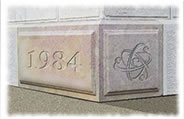Tao of Extemp
“A poor idea well written is more likely to be accepted than a good idea poorly written.”
—Isaac Asimov
Scientist, Author
Coaching students in Extemp (Extemporaneous Speaking), an interesting thing revealed itself: Students received their topics, then repaired to the Prep Room to begin. Some began by sitting down and writing furiously… Obviously, they were the ones with the “Best Topics,” those with some immediate news currency, which presented Top of Mind arguments.
Other competitors sat down and looked at the ceiling or dug into their available reference materials to gather data before composing remarks. All this might be as expected. As the prep time began to wane, some competitors wrote faster, referenced their data more carefully; some even re-writing their notes, more and more precisely, until they had the perfect set. Then they stood, assembled their belongings and made their way to their performance rooms for their call to compete. Meanwhile, a striking difference had begun to appear…
Others had used their remaining time differently. Somewhere around the half-way point, these players stood up, put their notes down and began to sub-vocally rehearse their remarks. Each one was an individual of course, but they began to move, pace, gesture, turn, pause and make eye contact with their imaginary audiences. Again and again, they ran through their remarks, until, just before time, they too assembled their belongings and made their way off to compete.
I was on to something. Some people spent their entire prep allotment putting a fine gloss on their research and writing. They were dedicated students, and careful thinkers. When asked, they showed me their finished materials and many were indistinguishable from a term-exam paper. These, as it turned out, were the Losers.
“The Rehearsers” on the other hand, had notes that were nowhere near “presentable.” They were devoid of complete sentences, and erred on the side of brevity — extreme brevity.
Following up on my hunch, I began to watch the finals prep and the awards assemblies. If it’s not already obvious, the writers had their share of good performers, but few of them finished in the Trophy Class. Then came the Flash: The Winners were those who could “Stand and Deliver.” An Extemporaneous Speech is in fact, “A Speech” not a Document.
The winners were those who put enough time into the preparation to make a convincing argument, but also practiced and polished the delivery of that argument in the form of a speech. Speeches benefit from rehearsal — as do all forms of performance art.
You need to make sure you have your weight on the correct foot to make that precipitous turn to stride back to center stage as you summarize. You need to make sure that your powerful hand gesture does indeed appear “powerful” when you put it up there for all to see as you conclude your remarks.
As it turns out, the Thinkers in the Prep Room put all of their time into their Content — which was respectable, and no time at all into their delivery — which as it turned out, was less convincing because it had received no investment of time. Though carefully thought out, they suffered from less powerful, less dramatic, less compelling delivery. And they went down to defeat in the finals.
Good ideas, poorly delivered, will not win your contest, whatever it may be. Winning, requires the complete package. This article focuses on speaking competition, but in all of life we have to attend to each piece of the package. Think of it as a decathlon, creating, composing, editing, performing, packaging and delivering across all communication channels — sending one uniform message, available everywhere.
Applications
1. For You
Have you ever put your heart and soul into a document, then been asked (or ordered) when the day came, to verbally summarize it? How’d that go? Communication happens in person, in writing, on the keyboard, screen, and in many cases now, on the phone screen. It may just be insurance, but shouldn’t you be able to knock it out of the park in all media?
2. For the Family
As you and your family connect with your community at school, church, the coaches’ gathering, or the neighborhood board, your ability to “get your point across” concisely and memorably will stand all of you in great stead — if you can learn how to underscore what you want your listeners to do, why it’s a good idea, and how they should proceed. If you can do it in writing, in person and on the phone, you’re Gold!
3. For Work
Few things make you stay up late preparing like being on the spot in the office. But, be a little extra prepared, and walk in ready to make your points across all media. The presentation should be a Home Run, but also the voice mail follow-up and the email version of the complete report. If they’re all done when you walk into the room, you don’t have to worry about what to do when they go for it! You’re already prepared.
Extemp is a great teaching tool — underscoring the truism that a speech is a speech, not a document. But today, a document has to be all things to all consumers, at least if you want to relate equally well to all your constituents.
We think “One Story, Many Voices!®” has never been in greater demand.
Subscribe to our Newsletter


